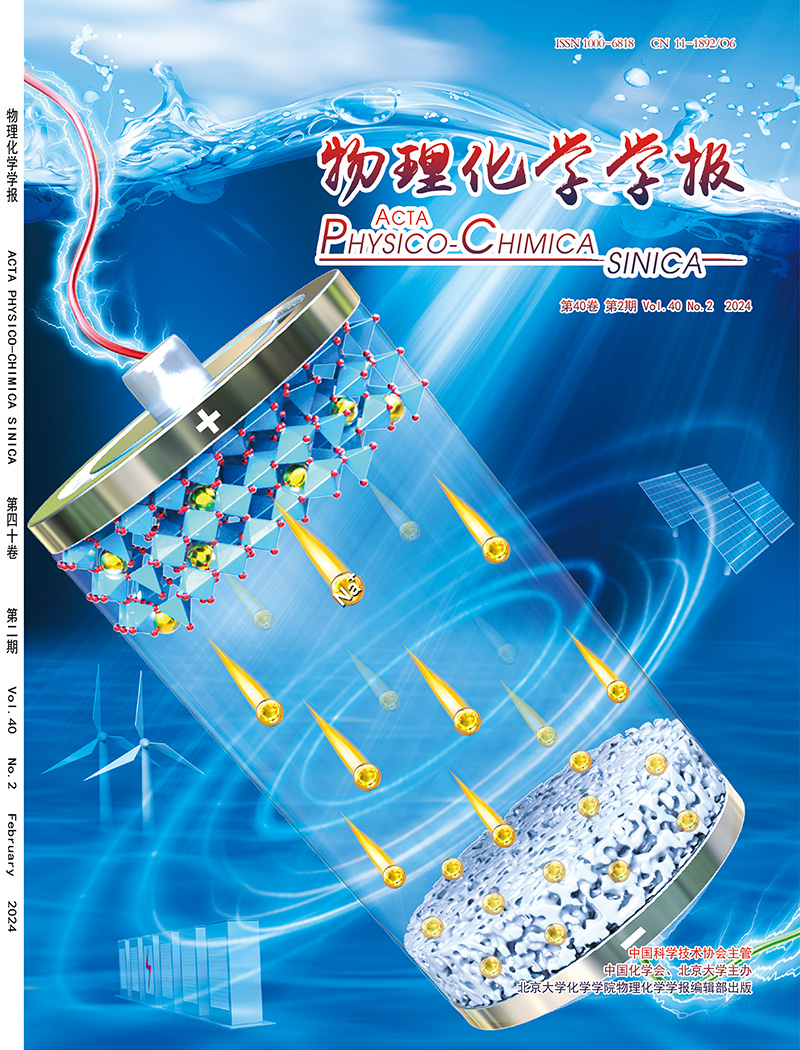Modulating the d-band center of NNU-55(Fe) for enhanced CO2 adsorption and photocatalytic activity
IF 13.5
2区 化学
Q1 CHEMISTRY, PHYSICAL
引用次数: 0
Abstract
Photocatalytic reduction of carbon dioxide (CO2) has emerged as an effective technology to transform CO2 into valuable chemicals. Metal-organic frameworks (MOFs) show great promise due to their adjustable structures, huge specific surface areas, excellent catalytic properties, and remarkable photo responsiveness. Herein, the MOF material NNU-55(Fe) was employed for the photocatalytic transformation of CO2 into carbon monoxide (CO). Through electronic modulation of the active metal center (Fe–N4) via inorganic anionic ligand tuning, the photocatalytic performance of NNU-55(Fe) MOFs can be easily regulated. Notably, NO3−-coordinated NNU-55(Fe) demonstrated superior catalytic performance compared to SO42−- and Cl−-coordinated catalysts, achieving a CO production of 124 μmol·g−1 within 3 h. The stronger electron donation capacity of NO3− leads to an improved electron density of Fe centers, which lowers the Fe d-band center and enhances the bonding orbital occupancy in the adsorption system, thereby increasing the adsorption strength of CO2 and reduction activity. This study highlights a simple strategy for altering the catalytic activity and electrical structure of MOFs by altering the coordinated inorganic ligands of metal sites, offering a novel approach to developing efficient photocatalytic materials.

调节NNU-55(Fe)的d波段中心增强CO2吸附和光催化活性
光催化还原二氧化碳(CO2)已成为将二氧化碳转化为有价值化学品的有效技术。金属有机框架(MOFs)因其可调整的结构、巨大的比表面积、优异的催化性能和显著的光响应性而大有可为。本文采用 MOF 材料 NNU-55(Fe)进行二氧化碳到一氧化碳(CO)的光催化转化。通过无机阴离子配体对活性金属中心(Fe-N4)进行电子调控,NNU-55(Fe) MOFs 的光催化性能可轻松调节。值得注意的是,与 SO42 和 Cl 配位的催化剂相比,NO3 配位的 NNU-55(Fe)具有更优越的催化性能,可在 3 小时内产生 124 μmol-g-1 的 CO。NO3- 较强的电子捐赠能力提高了 Fe 中心的电子密度,从而降低了 Fe d 带中心,增强了吸附体系中成键轨道的占有率,从而提高了对 CO2 的吸附强度和还原活性。这项研究强调了一种通过改变金属位点配位的无机配体来改变 MOFs 催化活性和电性结构的简单策略,为开发高效光催化材料提供了一种新方法。
本文章由计算机程序翻译,如有差异,请以英文原文为准。
求助全文
约1分钟内获得全文
求助全文

 求助内容:
求助内容: 应助结果提醒方式:
应助结果提醒方式:


